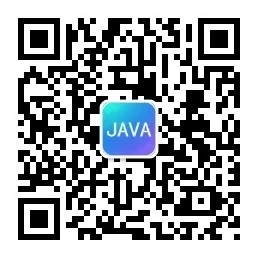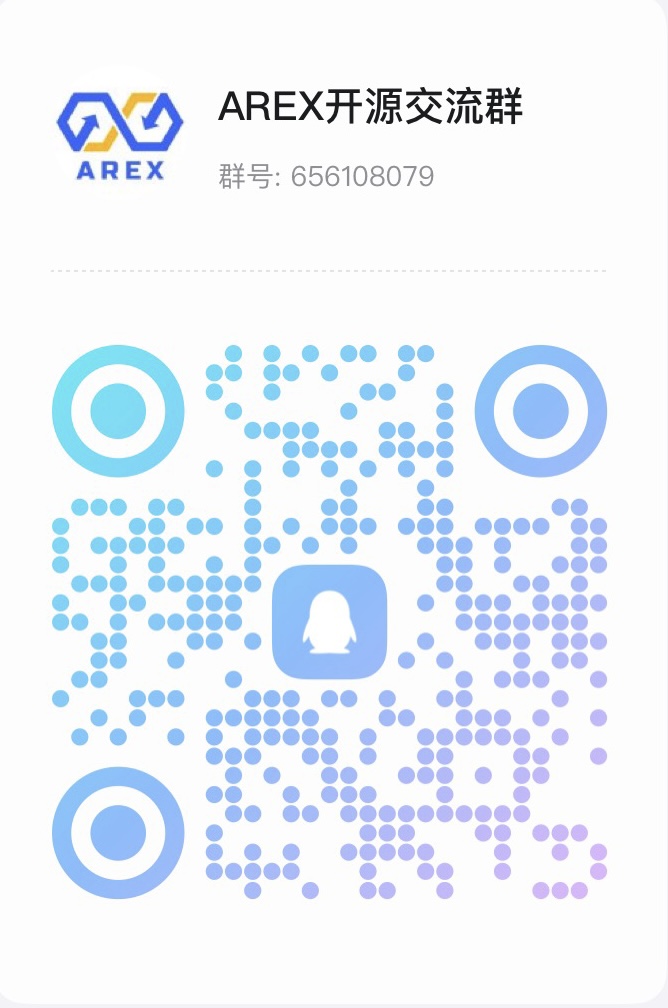欢迎您是全球710万活跃的Java开发人员之一,也可能是1200万在一生中学习过Java语言的开发人员之一。
在本文中,我将指导您使用Corda构建第一个区块链应用程序,Corda是一个在JVM中运行的区块链平台,仅使用Java。准备好在Java同行中脱颖而出!

你需要什么…
在本文中,我不会详细介绍区块链是什么以及人们为什么需要区块链。我将直接进入编码,并在进行过程中解释去中心化的逻辑。因此,以下是您需要遵循的内容:
1. 您可以选择IDE或代码编辑器。
2. 具有最小2GB RAM的JVM环境。(大多数台式机/笔记本电脑/虚拟机都能够运行Corda。我建议您在Pi上运行应用程序!)。
3. 最后,但并非最不重要的是,您的Java知识!
我们应该建造什么…
当然,我们将从“Hello World”应用程序开始!我们将构建一个应用程序,从区块链上的一方向另一方发送“Hello World”消息。
在Corda世界中,您编写的区块链应用程序称为CorDapp。它仅由三个部分组成:
- 状态:创建、更新、存储和使用的真实资产/对象。例如,一本借书、一辆标记化自行车或一个游戏板。
- 合同:规范/验证国家交易、更新和消费的规则。
- 流程:指示如何执行每个事务的指令。
不用多说,让我们开始编码吧。
步骤1:Corda 状态
在此处克隆Cordapp代码(https://github.com/corda/cordapp-template-java)。
使用您选择的代码编辑器打开它,然后导航到:
/contracts/src/main/java/com/template/states/TemplateState.java
@BelongsToContract(TemplateContract.class)
public class TemplateState implements ContractState {
/* Constructor of your Corda state */
public TemplateState() {
}
/* This method will indicate who are the participants and required signers when
* this state is used in a transaction. */
@Override
public List<AbstractParty> getParticipants() {
return Arrays.asList();
}
}在Corda世界中,大多数数据都是在一个名为State的对象中处理的。每个状态都有一个@BelongsToContract()注释,指示将使用哪个合同文件在事务中验证此状态。State和合同是1比1挂钩的。继续我们的Hello world CorDapp,我们只需添加几行代码,使上面的TemplateState包含一条消息。我们的州将有3个属性。
- 字符串消息
- 发信人
- 信息接收者
@BelongsToContract(TemplateContract.class)
public class TemplateState implements ContractState {
//private variables
private String msg;
private Party sender;
private Party receiver;
/* Constructor of your Corda state */
public TemplateState(String msg, Party sender, Party receiver) {
this.msg = msg;
this.sender = sender;
this.receiver = receiver;
}
//getters
public String getMsg() { return msg; }
public Party getSender() { return sender; }
public Party getReceiver() { return receiver; }
/* This method will indicate who are the participants and required signers when
* this state is used in a transaction. */
@Override
public List<AbstractParty> getParticipants() {
return Arrays.asList(sender,receiver);
}
}创建三个变量,实例化变量,创建getter,填写参与者的列表,然后就是Corda状态。创建区块链应用程序的第一步已经完成。
步骤2:Corda合同
导航到/contracts/src/main/java/com/template/contracts/TemplateContract.java
public class TemplateContract implements Contract {
// This is used to identify our contract when building a transaction.
public static final String ID = "com.template.contracts.TemplateContract";
// A transaction is valid if the verify() function of the contract of all the transaction's input and output states
// does not throw an exception.
@Override
public void verify(LedgerTransaction tx) {}
// Used to indicate the transaction's intent.
public interface Commands extends CommandData {
class Action implements Commands {}
}
}在Corda世界中,涉及一个国家的每一笔交易都必须通过合同进行验证。每份合同由三个必要部分组成:
- 用于以后参考的合同Id
- 检查事务的verify()方法
- 一个命令界面,用于指示事务关于状态的意图。请注意,所有标准契约(不包括令牌契约,因为它们是预先编写的)都必须使用命令,为了方便起见,我们通常在接口中定义它们。
public class TemplateContract implements Contract {
// This is used to identify our contract when building a transaction.
public static final String ID = "com.template.contracts.TemplateContract";
// A transaction is valid if the verify() function of the contract of all the transaction's input and output states
// does not throw an exception.
@Override
public void verify(LedgerTransaction tx) {
/* We can use the requireSingleCommand function to extract command data from transaction.
* However, it is possible to have multiple commands in a signle transaction.*/
final CommandWithParties<Commands> command = requireSingleCommand(tx.getCommands(), Commands.class);
final Commands commandData = command.getValue();
if (commandData.equals(new Commands.Send())) {
//Retrieve the output state of the transaction
TemplateState output = tx.outputsOfType(TemplateState.class).get(0);
//Using Corda DSL function requireThat to replicate conditions-checks
requireThat(require -> {
require.using("The message must be Hello-World", output.getMsg().equals("Hello-World"));
return null;
});
}
}
// Used to indicate the transaction's intent.
public interface Commands extends CommandData {
//In our hello-world app, We will only have one command.
class Send implements Commands {}
}
}在Commands界面中,我们创建了一个名为send的命令,稍后我们将使用该命令指示事务的意图。
在verify()方法中,我们询问:
事务内部状态中携带的消息字符串必须是“Hello World”。
到这一步结束时,您将已经编写了合同。
步骤3:Corda流程
拥有可操作区块链应用程序之前的最后一步!导航到/workflows/src/main/java/com/template/flows/Initiator.java
@InitiatingFlow
@StartableByRPC
public class Initiator extends FlowLogic<Void> {
private final ProgressTracker progressTracker = new ProgressTracker();
@Override
public ProgressTracker getProgressTracker() {
return progressTracker;
}
@Suspendable
@Override
public Void call() throws FlowException {
// Initiator flow logic goes here.
return null;
}
}在Corda世界中,启动器流触发应用程序中的业务操作。无论是发送事务还是传递消息,都必须有一个启动器来发出操作信号。除了私有变量和构造函数之外,发起程序流还包括一个名为call()的签名方法。
每当调用启动器时,此方法将自动运行。这是将有效负载添加到事务、签名和签名集合的地方。现在,让我们根据Hello World的情况填写一下。
@InitiatingFlow
@StartableByRPC
public class Initiator extends FlowLogic<SignedTransaction> {
// We will not use these ProgressTracker for this Hello-World sample
private final ProgressTracker progressTracker = new ProgressTracker();
@Override
public ProgressTracker getProgressTracker() {
return progressTracker;
}
//private variables
private Party sender ;
private Party receiver;
//public constructor
public Initiator(Party sendTo){
this.receiver = sendTo;
}
@Suspendable
@Override
public SignedTransaction call() throws FlowException {
//Hello World message
String msg = "Hello-World";
this.sender = getOurIdentity();
// Step 1. Get a reference to the notary service on our network and our key pair.
// Note: ongoing work to support multiple notary identities is still in progress.
final Party notary = getServiceHub().getNetworkMapCache().getNotaryIdentities().get(0);
//Compose the State that carries the Hello World message
final TemplateState output = new TemplateState(msg,sender,receiver);
// Step 3. Create a new TransactionBuilder object, and add the iou as an output state,
//as well as a command to the transaction builder.
final TransactionBuilder builder = new TransactionBuilder(notary);
builder.addOutputState(output);
builder.addCommand(new TemplateContract.Commands.Send(), Arrays.asList(this.sender.getOwningKey(),this.receiver.getOwningKey()) );
// Step 4. Verify and sign it with our KeyPair.
builder.verify(getServiceHub());
final SignedTransaction ptx = getServiceHub().signInitialTransaction(builder);
// Step 5. Collect the other party's signature using the SignTransactionFlow.
List<Party> otherParties = output.getParticipants().stream().map(el -> (Party)el).collect(Collectors.toList());
otherParties.remove(getOurIdentity());
List<FlowSession> sessions = otherParties.stream().map(el -> initiateFlow(el)).collect(Collectors.toList());
SignedTransaction stx = subFlow(new CollectSignaturesFlow(ptx, sessions));
// Step 6. Assuming no exceptions, we can now finalise the transaction
return subFlow(new FinalityFlow(stx, sessions));
}
}在这个Hello World启动器流中,我们必须:
1. 获得公证处的证明。[防止双重开支]
2. 撰写包含Hello World消息的状态。[产生输出]
3. 创建一个新的TransactionBuilder对象,将带有Hello World消息的状态添加为输出状态,并将命令添加到事务生成器中。[组成交易]
4. 验证并用我们的密钥对签名。[自行核实并签字]
5. 使用SignTransactionFlow收集另一方的签名。[在交易对手之间达成共识]
6. 完成交易并向所有相关方广播。[将交易存储到分类账]
这将是向交易对手发送Hello World的发起方流程。但是,我们还没有结束。我们必须注意该启动器的响应部分。现在,导航到/workflows/src/main/java/com/template/flows/Responder.java
@InitiatedBy(Initiator.class)
public class Responder extends FlowLogic<Void> {
//private variable
private FlowSession counterpartySession;
//Constructor
public Responder(FlowSession counterpartySession) {
this.counterpartySession = counterpartySession;
}
@Suspendable
@Override
public Void call() throws FlowException {
// Responder flow logic goes here.
return null;
}
}响应程序流,如其名称所示,将从对方方响应相应的发起程序流。这个annotation@InitiatedBy显示它与哪个启动器关联。
同样,响应者也有一个自动运行调用(),该方法将在本地重新检查并保存事务(在对方节点端,因为响应者是在对方端触发的)。
@InitiatedBy(Initiator.class)
public class Responder extends FlowLogic<Void> {
//private variable
private FlowSession counterpartySession;
//Constructor
public Responder(FlowSession counterpartySession) {
this.counterpartySession = counterpartySession;
}
@Suspendable
@Override
public Void call() throws FlowException {
SignedTransaction signedTransaction = subFlow(new SignTransactionFlow(counterpartySession) {
@Suspendable
@Override
protected void checkTransaction(SignedTransaction stx) throws FlowException {
/*
* SignTransactionFlow will automatically verify the transaction and its signatures before signing it.
* However, just because a transaction is contractually valid doesn’t mean we necessarily want to sign.
* What if we don’t want to deal with the counterparty in question, or the value is too high,
* or we’re not happy with the transaction’s structure? checkTransaction
* allows us to define these additional checks. If any of these conditions are not met,
* we will not sign the transaction - even if the transaction and its signatures are contractually valid.
* ----------
* For this hello-world cordapp, we will not implement any aditional checks.
* */
}
});
//Stored the transaction into data base.
subFlow(new ReceiveFinalityFlow(counterpartySession, signedTransaction.getId()));
return null;
}
}到目前为止,您已经完成了第一个区块链应用程序的编写。我们要试着运行它们吗?
正在运行Hello World区块链应用程序…
转到终端,导航到项目文件夹/cordapp template java/并运行以下代码来部署应用程序。
./gradlew clean deployNodes(适用于Unix)和gradlew.bat clean deployNodes(适用于Windows)
成功引导将产生以下信息:

现在,运行以下代码以运行引导环境:
/build/nodes/runnodes(适用于Unix)和.buildnodesrunnodes.bat(适用于Windows)。
我们应该期待三个节点在不同的选项卡中启动并启动它们的shell。

现在让我们从PartyA向PartyB发送“Hello world”。
转到PartyA的shell并运行:
流启动启动器发送到:PartyB
我们应该期待以下信息:

到目前为止,我们已经通过分布式系统从一方向另一方发送了“Hello World”消息!但是是吗?让我们检查一下!
导航到PartyB的节点外壳并运行:
运行Vault Query contractStateType:com.template.states.TemplateState

就在那里!携带“Hello World”并从PartyA发送到PartyB的模板状态。
这个应用程序的“区块链”是什么?
你可能会想,等一下,我只看到一个在各方之间发送消息的应用程序,块在哪里?链条在哪里?通过部署和运行该应用程序,您已经成功启动了一个通常称为“区块链”的本地分布式账本系统。
携带消息字符串的状态是块。您将通过事务连接与先前生成的状态相关的后续状态,我们可以将其视为“链”。
这种状态交易链仅在参与方之间需要了解的基础上共享。(回忆步骤1中的参与者列表)。因此,在Corda世界中,数据是分布式共享的。不会有一个记录各方交易的集中数据库。
回到Hello World示例,事务(txHash:736AA884909645171B56AD965D3B…94E4F457C)带有genesis块(状态),可以用作另一个事务的输入,该链将继续运行。与区块链的概念类似:
Corda状态(块)由Corda事务(链)链接
想了解更多关于在Corda上构建出色区块链应用程序的信息吗?请务必访问corda.net,查看我们的社区页面,了解如何与其他CorDapp开发人员联系,或注册我们的最新更新时事通讯。
原文地址:https://www.corda.net/blog/how-to-develop-a-blockchain-application-if-i-only-know-java/
除特别注明外,本站所有文章均为老K的Java博客原创,转载请注明出处来自https://javakk.com/2417.html




 在这个努力程度如此低下的时代,还轮不到比拼天赋。静下心来,just do it
在这个努力程度如此低下的时代,还轮不到比拼天赋。静下心来,just do it

暂无评论